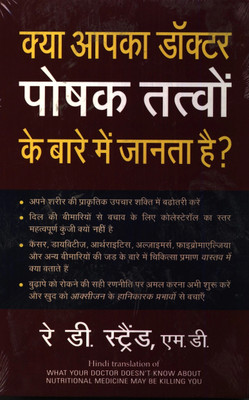
Python for Data Science for GTU 18 Course (V - CE/CSE/Open Elec. 1 - 3150713) (Paperback, I.A.Dhotre)
Share
Python for Data Science for GTU 18 Course (V - CE/CSE/Open Elec. 1 - 3150713) (Paperback, I.A.Dhotre)
3.2
6 Ratings & 0 Reviews₹215
Available offers
T&C
T&C
T&C
T&C
Delivery
Check
Enter pincode
Delivery by22 Dec, Monday
?
View Details
Highlights
- Binding: Paperback
- Publisher: Technical Publications
- ISBN: 9789333221429
- Edition: 1, 2020
- Pages: 116
Services
- Cash on Delivery available?
Seller
Description
1. Overview of Python and Data Structures: Basics of Python including data types, variables, expressions, objects and functions. Python data structures including String, Array, List, Tuple, Set, Dictionary and operations them. (Unit - I) 2. Data Science and Python: Discovering the match between data science and python: Defining the Sexiest Job of the 21st Century, Considering the emergence of data science, Outlining the core competencies of a data scientist, Linking data science, big data, and AI , Understanding the role of programming, Creating the Data Science Pipeline, Preparing the data, Performing exploratory data analysis, Learning from data, Visualizing, Obtaining insights and data products, Understanding Python's Role in Data Science, Considering the shifting profile of data scientists, Working with a multipurpose, simple, and efficient language, Learning to Use Python Fast ,Loading data, Training a model, Viewing a result. Introducing Python's Capabilities and Wonders: Why Python?, Grasping Python's Core Philosophy, Contributing to data science, Discovering present and future development goals, Working with Python, Getting a taste of the language, Understanding the need for indentation, Working at the command line or in the IDE, Performing Rapid Prototyping and Experimentation, Considering Speed of Execution, Visualizing Power, Using the Python Ecosystem for Data Science, Accessing scientific tools using SciPy, Performing fundamental scientific computing using NumPy, Performing data analysis using pandas, Implementing machine learning using Scikit-learn, Going for deep learning with Keras and TensorFlow, Plotting the data using matplotlib, Creating graphs with NetworkX, Parsing HTML documents using Beautiful Soup. (Unit - II) 3. Getting Your Hands Dirty With Data: Understanding the tools: Using the Jupyter Console, Interacting with screen text, Changing the window appearance, Getting Python help, Getting IPython help, Using magic functions, Discovering objects, Using Jupyter Notebook, Working with styles, Restarting the kernel, Restoring a checkpoint, Performing Multimedia and Graphic Integration, Shaping Data: Working with HTML Pages, Parsing XML and HTML, Using XPath for data extraction, Working with Raw Text, Dealing with Unicode, Stemming and removing stop words, Introducing regular expressions, Using the Bag of Words Model and Beyond, Understanding the bag of words model, Working with ngrams, Implementing TF-IDF transformations, Working with Graph Data, Understanding the adjacency matrix, Using NetworkX basics. (Unit - III) 4. Data Visulization: Visualizing Information: Starting with a Graph, Defining the plot, Drawing multiple lines and plots, Saving your work to disk, Setting the Axis, Ticks, Grids, Getting the axes, Formatting the axes, Adding grids, Defining the Line Appearance, Working with line style, Using colors, Adding markers, Using Labels, Annotations, and Legends, Adding labels, Annotating the chart, Creating a legend. Visualizing the Data: Choosing the Right Graph, Showing parts of a whole with pie charts, Creating comparisons with bar charts, Showing distributions using histograms, Depicting groups using boxplots, Seeing data patterns using scatterplots, Creating Advanced Scatterplots, Depicting groups, Showing correlations, Plotting Time Series, Representing time on axes, Plotting trends over time, Plotting Geographical Data, Using an environment in Notebook, Getting the Basemap toolkit, Dealing with deprecated library issues, Using Basemap to plot geographic data, Visualizing Graphs, Developing undirected graphs, Developing directed graphs. (Unit - IV) 5. Data Wrangling: Wrangling Data: Playing with Scikit-learn, Understanding classes in Scikit-learn, Defining applications for data science, Performing the Hashing Trick, Using hash functions, Demonstrating the hashing trick, Working with deterministic selection, Considering Timing and Performance, Benchmarkin, with,timeit, Working with the memory profiler, Running in Parallel on Multiple Cores, Performing multicore parallelism, Demonstrating multiprocessing. (Unit - V)
Read More
Specifications
Book Details
| Publication Year |
|
University Books Details
| Stream |
|
| Degree/Diploma |
|
Ratings & Reviews
3.2
★
6 Ratings &
0 Reviews
- 5★
- 4★
- 3★
- 2★
- 1★
- 3
- 0
- 0
- 1
- 2
Have you used this product? Be the first to review!
Be the first to ask about this product
Safe and Secure Payments.Easy returns.100% Authentic products.
Back to top




